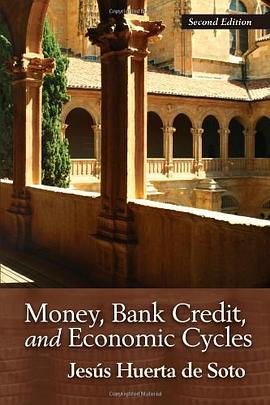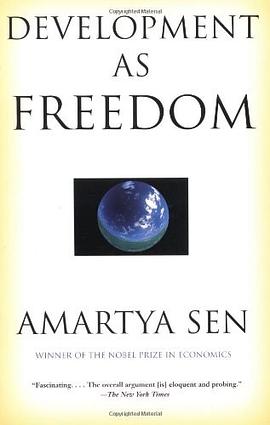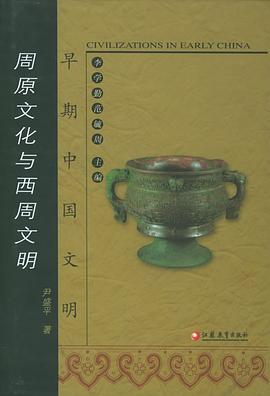CONTENTS
Preface to the English-Language Edition
Preface to the Second Spanish Edition
Introduction
Chapter 1: The Legal Nature of the Monetary Irregular-Deposit Contract
A Preliminary Clarification of Terms: Loan Contracts (Mutuum and Commodatum)and Deposit Contracts
The Commodatum Contract
The Mutuum Contract
The Deposit Contract
The Deposit of Fungible Goods or "Irregular" Deposit Contract
The Economic and Social Function of Irregular Deposits
The Fundamental Element in the Monetary Irregular Deposit
Resulting Effects of the Failure to Comply with the Essential Obligation in the Irregular Deposit
Court Decisions Acknowledging the Fundamental Legal Principles which Govern the Monetary Irregular-Deposit Contract (100-Percent Reserve Requirement)
The Essential Differences Between the Irregular Deposit Contract and the Monetary Loan Contract
The Extent to Which Property Rights are Transferred in Each Contract
Fundamental Economic Differences Between the Two Contracts
Fundamental Legal Differences Between the Two Contracts
The Discovery by Roman Legal Experts of the General Legal Principles Governing the Monetary Irregular-Deposit Contract
The Emergence of Traditional Legal Principles According to Menger, Hayek and Leoni
Roman Jurisprudence
The Irregular Deposit Contract Under Roman Law
Chapter 2: Historical Violations of the Legal Principles Legal Principles Governing the Monetary Irregular-Deposit Contract
Introduction
Banking in Greece and Rome
Trapezitei, or Greek Bankers
Banking in the Hellenistic World
Banking in Rome
The Failure of the Christian Callistus's Bank
The Societates Argentariae
Bankers in the Late Middle Ages
The Revival of Deposit Banking in Mediterranean Europe
The Canonical Ban on Usury and the "Depositum Confessatum"
Banking in Florence in the Fourteenth Century
The Medici Bank
Banking in Catalonia in the Fourteenth and Fifteenth Centuries: The Taula de Canvi
Banking During the Reign of Charles V and the Doctrine of the School of Salamanca
The Development of Banking in Seville
The School of Salamanca and the Banking Business
A New Attempt at Legitimate Banking: The Bank of Amsterdam.
Banking in the Seventeenth and Eighteenth Centuries
The Bank of Amsterdam
David Hume and the Bank of Amsterdam
Sir James Steuart, Adam Smith and the Bank of Amsterdam
The Banks of Sweden and England
John Law and Eighteenth-Century Banking in France
Richard Cantillon and the Fraudulent Violation of the Irregular-Deposit Contract
Chapter 3: Attempts to Legally Justify Fractional-Reserve Banking
Introduction
Why it is Impossible to Equate the Irregular Deposit with the Loan or Mutuum Contract
The Roots of the Confusion
The Mistaken Doctrine of Common Law
The Doctrine of Spanish Civil and Commercial Codes
Criticism of the Attempt to Equate the Monetary Irregular-Deposit Contract with the Loan or Mutuum Contract
The Distinct Cause or Purpose of Each Contract
The Notion of the Unspoken or Implicit Agreement
An Inadequate Solution: The Redefinition of the Concept of Availability
The Monetary Irregular Deposit, Transactions with a Repurchase Agreement and Life Insurance Contracts
Transactions with a Repurchase Agreement
The Case of Life Insurance Contract
Chapter 4: The Credit Expansion Process
Introduction
The Bank's Role as a True Intermediary in the Loan Contract
The Bank's Role in the Monetary Bank-Deposit Contract
The Effects Produced by Bankers' Use of Demand Deposits: The Case of an Individual Bank
The Continental Accounting System
Accounting Practices in the English-speaking World
An Isolated Bank's Capacity for Credit Expansion and Deposit Creation
The Case of a Very Small Bank
Credit Expansion and Ex Nihilo Deposit Creation by a Sole, Monopolistic Bank
Credit Expansion and New Deposit Creation by the Entire Banking System
Creation of Loans in a System of Small Banks
A Few Additional Difficulties
When Expansion is Initiated Simultaneously by All Banks
Filtering Out the Money Supply From the Banking System
The Maintenance of Reserves Exceeding the Minimum Requirement
Different Reserve Requirements for Different Types of Deposits
The Parallels Between the Creation of Deposits and the Issuance of Unbacked Banknotes
The Credit Tightening Process
Chapter 5: Bank Credit Expansion and Its Effects on the Economic System
The Foundations of Capital Theory
Human Action as a Series of Subjective Stages
Capital and Capital Goods
The Interest Rate
The Structure of Production
Some Additional Considerations
Criticism of the Measures used in National Income Accounting
The Effect on the Productive Structure of an Increase in Credit Financed under a Prior Increase in Voluntary Saving
The Three Different Manifestations of the Process of Voluntary Saving
Account Records of Savings Channeled into Loans
The Issue of Consumer Loans
The Effects of Voluntary Saving on the Productive Structure
First: The Effect Produced by the New Disparity in Profits Between the Different Productive Stages
Second: The Effect of the Decrease in the Interest Rate on the Market Price of Capital Goods
Third: The Ricardo Effect
Conclusion: The Emergence of a New, More Capital-Intensive Productive Structure
The Theoretical Solution to the "Paradox of Thrift"
The Case of an Economy in Regression
The Effects of Bank Credit Expansion Unbacked by an Increase in Saving: The Austrian Theory or Circulation Credit Theory of the Business Cycle
The Effects of Credit Expansion on the Productive Structure
The Market's Spontaneous Reaction to Credit Expansion
Banking, Fractional-Reserve Ratios and the Law of Large Numbers
Chapter 6: Additional Considerations on the Theory of the Business Cycle
Why no Crisis Erupts when New Investment is Financed by Real Saving (And Not by Credit Expansion)
The Possibility of Postponing the Eruption of the Crisis: The Theoretical Explanation of the Process of Stagflation
Consumer Credit and the Theory of the Cycle
The Self-Destructive Nature of the Artificial Booms Caused by Credit Expansion: The Theory of "Forced Saving"
The Squandering of Capital, Idle Capacity and Malinvestment of Productive Resources
Credit Expansion as the Cause of Massive Unemployment
National Income Accounting is Inadequate to Reflect the Different Stages in the Business Cycle
Entrepreneurship and the Theory of the Cycle
The Policy of General-Price-Level Stabilization and its Destabilizing Effects on the Economy
How to Avoid Business Cycles: Prevention of and Recovery from the Economic Crisis
The Theory of the Cycle and Idle Resources: Their Role in the Initial Stages of the Boom
The Necessary Tightening of Credit in the Recession Stage: Criticism of the Theory of "Secondary Depression"
The "Manic-Depressive" Economy: The Dampening of the Entrepreneurial Spirit and Other Negative Effects Recurring Business Cycles Exert on the Market Economy
The Influence Exerted on the Stock Market by Economic Fluctuations
Effects the Business Cycle Exerts on the Banking Sector
Marx, Hayek and the View that Economic Crises are Intrinsic to Market Economies
Two Additional Considerations
Empirical Evidence for the Theory of the Cycle
Business Cycles Prior to the Industrial Revolution
Business Cycles From the Industrial Revolution Onward
The Roaring Twenties and the Great Depression of 1929
The Economic Recessions of the Late 1970s and Early 1990s
Some Empirical Testing of the Austrian Theory of the Business Cycle
Conclusion
Chapter 7: A Critique of Monetarist and Keynesian Theories
Introduction
A Critique of Monetarism
The Mythical Concept of Capital
Austrian Criticism of Clark and Knight
A Critique of the Mechanistic Monetarist Version of the Quantity Theory of Money
A Brief Note on the Theory of Rational Expectations
Criticism of Keynesian Economics
Say's Law of Markets
Keynes's Three Arguments On Credit Expansion
Keynesian Analysis as a Particular Theory
The So-Called Marginal Efficiency of Capital
Keynes's Criticism of Mises and Hayek
Criticism of the Keynesian Multiplier
Criticism of the "Accelerator" Principle
The Marxist Tradition and the Austrian Theory of Economic Cycles: The Neo-Ricardian Revolution and the Reswitching Controversy
Conclusion
Appendix on Life Insurance Companies and Other Non-Bank Financial Intermediaries
Life Insurance Companies as True Financial Intermediaries
Surrender Values and the Money Supply
The Corruption of Traditional Life-Insurance Principles
Other True Financial Intermediaries: Mutual Funds and Holding and Investment Companies
Specific Comments on Credit Insurance
Chapter 8: Central and Free Banking Theory
A Critical Analysis of the Banking School
The Banking and Currency Views and the School of Salamanca
The Response of the English-Speaking World to these Ideas on Bank Money
The Controversy Between the Currency School and the Banking School
The Debate Between Defenders of the Central Bank and Advocates of Free Banking
Parnell's Pro-Free-Banking Argument and the Responses of McCulloch and Longfield
A False Start for the Controversy Between Central Banking and Free Banking
The Case for a Central Bank
The Position of the Currency-School Theorists who Defended a Free-Banking System
The "Theorem of the Impossibility of Socialism" and its Application to the Central Bank
The Theory of the Impossibility of Coordinating Society Based on Institutional Coercion or the Violation of Traditional Legal Principles
The Application of the Theorem of the Impossibility of Socialism to the Central Bank and the Fractional-Reserve Banking System
(a) A System Based on a Central Bank Which Controls and Oversees a Network of Private Banks that Operate with a Fractional Reserve
(b) A Banking System which Operates with a 100-Percent Reserve Ratio and is Controlled by a Central Bank
(c) A Fractional-Reserve Free-Banking System
Conclusion: The Failure of Banking Legislation
A Critical Look at the Modern Fractional-Reserve Free-Banking School
The Erroneous Basis of the Analysis: The Demand for Fiduciary Media, Regarded as an Exogenous Variable
The Possibility that a Fractional-Reserve Free-Banking System May Unilaterally Initiate Credit Expansion
The Theory of "Monetary Equilibrium" in Free Banking Rests on an Exclusively Macroeconomic Analysis
The Confusion Between the Concept of Saving and that of the Demand for Money
The Problem with Historical Illustrations of Free-Banking Systems
Ignorance of Legal Arguments
Conclusion: The False Debate between Supporters of Central Banking and Defenders of Fractional-Reserve Free Banking
Chapter 9: A Proposal for Banking Reform: The Theory of a 100-Percent Reserve Requirement
A History of Modern Theories in Support of a 100-Percent Reserve Requirement
The Proposal of Ludwig von Mises
F.A. Hayek and the Proposal of a 100-Percent Reserve Requirement
Murray N. Rothbard and the Proposal of a Pure Gold Standard with a 100-Percent Reserve Requirement
Maurice Allais and the European Defense of a 100-Percent Reserve Requirement
The Old Chicago-School Tradition of Support for a 100-Percent Reserve Requirement
Our Proposal for Banking Reform
Total Freedom of Choice in Currency
A System of Complete Banking Freedom
The Obligation of All Agents in a Free-Banking System to Observe Traditional Legal Rules and Principles, Particularly a 100-Percent Reserve Requirement on Demand Deposits
What Would the Financial and Banking System of a Totally Free Society be Like?
An Analysis of the Advantages of the Proposed System
Replies to Possible Objections to our Proposal for Monetary Reform
An Economic Analysis of the Process of Reform and Transition toward the Proposed Monetary and Banking System
A Few Basic Strategic Principles
Stages in the Reform of the Financial and Banking System
The Importance of the Third and Subsequent Stages in the Reform: The Possibility They Offer of Paying Off the National Debt or Social Security Pension Liabilities
The Application of the Theory of Banking and Financial Reform to the European Monetary Union and the Building of the Financial Sector in Economies of the Former Eastern Bloc
Conclusion: The Banking System of a Free Society
Bibliography
Index of Subjects
Index of Names
· · · · · · (
收起)






















